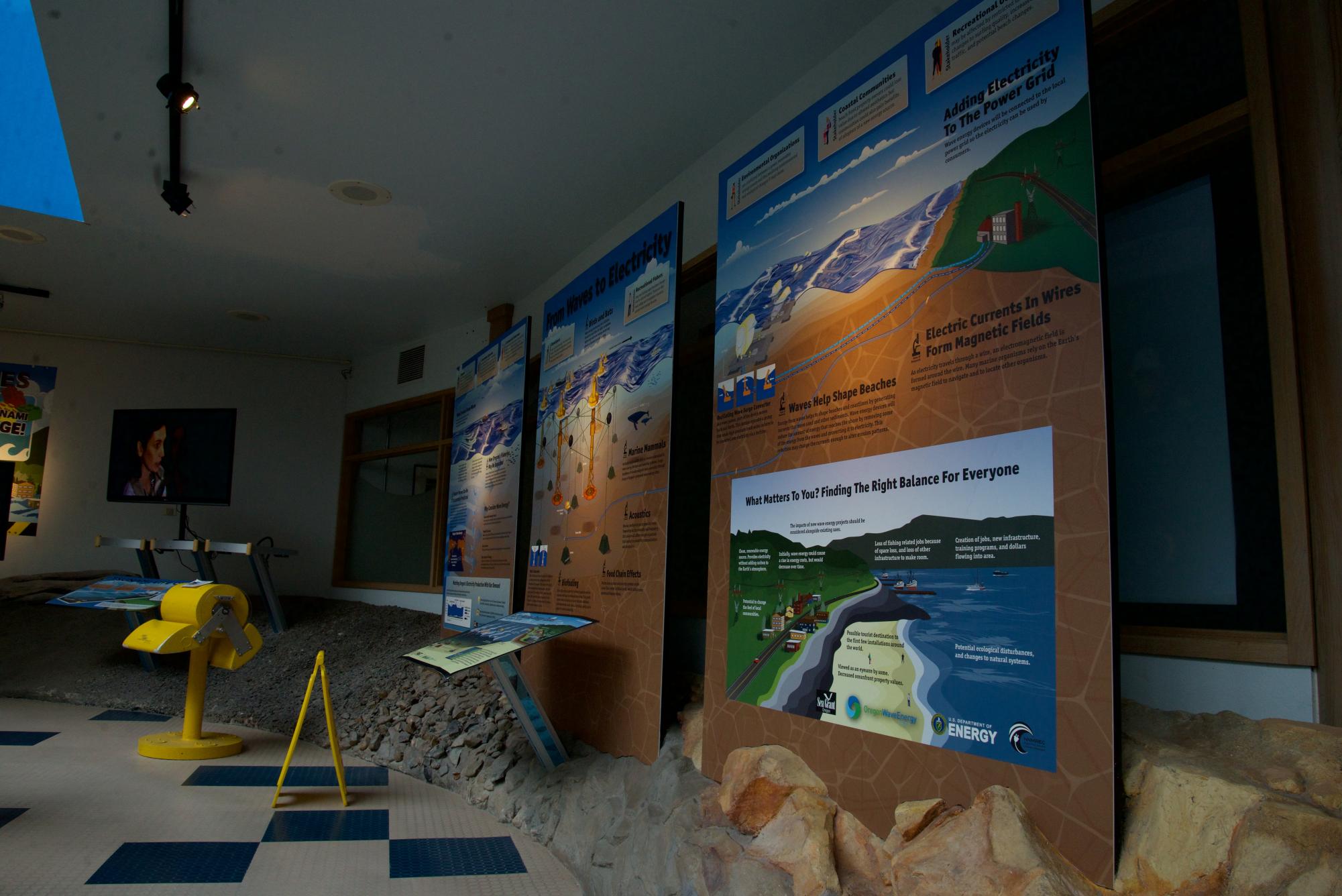A team of researchers led by Oregon State University have been selected by the U.S. Department of Energy to conduct a study about what coastal communities think about the potential installation of offshore wind energy.
“(Offshore wind energy) is electrical energy that’s generated by wind turbines that are placed in the sea or (lakes),”said Jeremy Firestone, project research team member and professor at the School of Marine Science and Policy at the University of Delaware,
According to Firestone, research for the project has not started yet and there are current negotiations with the DOE over the scope of work.
“(OSU) students will be working on the project but are not hired yet as the contract with the DOE is not yet finalized,” said Hillary Boudet, lead researcher and an associate professor in sociology at OSU.
According to Boudet, the project is expected to start early next year pending negotiations with the DOE.
According to an OSU press release, up to $2.5 million will be spent on this project to study coastal community values, preferences and concerns about offshore wind energy.
The funding for this project will be provided by the Pacific Marine Energy Center, a consortium of universities focusing on responsible marine renewable energy.
In Oregon, offshore wind energy installations are predicted to be outside of Coos Bay and Brookings, according to the Bureau of Ocean Energy Mangement’s Oregon draft wind energy areas.
According to Alexandra Thompson, communications specialist at the DOE, the BOEM manages the leasing of all offshore turbine installations for more than three nautical miles offshore. In Oregon, the turbines are predicted to be 30-40 miles offshore.
According to Thompson, the first generation of commercial offshore wind plants are expected to be operating over the next two years.
After installation, these offshore turbines are expected to bring long term economic and environmental benefits to coastal communities.
“The environmental benefits are primarily displacement of fossil fuel generation, so you’re putting less CO₂ into the atmosphere and obviously you’re putting less conventional pollutants into the atmosphere which cause human morbidity and mortality,” said Firestone.
In terms of economic benefits, a switch to offshore wind energy could open up many job opportunities.
“DOE models suggest that reaching the Floating Offshore Wind Shot’s 2035 cost target, could advance the switch to clean energy generation, with the potential for 120 gigawatts of floating offshore wind by 2050, enough to power about 35 million households. This level of deployment could produce about 80,000 offshore wind jobs by 2050,” said Thompson.
Although offshore wind energy has substantial benefits, there are ecological detriments that come along with the installation of offshore energy including bird mortality and disruption to marine life during construction, according to Firestone.
The installation of offshore energy could also be disruptive to the fishing industry.
According to Tuba Özkan-Haller, dean of the College of Earth, Ocean and Atmospheric Sciences, the turbines might be placed in fishing areas and there is a possibility that fish might be attracted to the anchoring mechanisms.
“Working with the fishing community, and bringing them along and having them be part of the decision making process, is the way in which we can minimize that impact,” said Özkan-Haller.
According to Thompson, each project will go through a rigorous National Environmental Policy review to evaluate the environmental and social impacts of offshore wind energy. BOEM will also be working with federal, state, tribal partners and communities to identify possible installation areas.
Wind turbines that are farther away from shore can capture more available wind resources, according to the New Hampshire Commission to Study Offshore Wind and Port Development.
These monumental offshore turbines are expected to dwarf the size of the average land turbine.
According to the U.S. Department of Energy, a turbine is measured by its hub height, the distance from the ground to the middle of the turbine’s rotor. Land turbines have become larger than the Statue of liberty, about 322 feet, while offshore turbines are projected to grow to about 500 feet in 2035.
According to the DOE, turbines are growing taller to capture more wind energy, since higher wind energy is found at higher altitudes.
Since the waters off the coast of Oregon are deeper, 60-1300 meters, the turbines will need to be anchored and attached to a floating platform, according to Thompson. If the waters were shallower, the turbines could be installed on the ocean floor.


















































































![Newspaper clipping from February 25, 1970 in the Daily Barometer showing an article written by Bob Allen, past Barometer Editor. This article was written to spotlight both the student body’s lack of participation with student government at the time in conjunction with their class representatives response. [It’s important to note ASOSU was not structured identically to today’s standards, likely having a president on behalf of each class work together as one entity as opposed to one president representing all classes.]](https://dailybaro.orangemedianetwork.com/wp-content/uploads/2025/03/Screenshot-2025-03-12-1.00.42-PM-e1741811160853.png)
























